(Publisher’s Note: In the following essay, Dr. Earle Zeigler shares with PHE America readers his thoughts on the status of physical education today and what he thinks the profession should do to advance. Now aged 98, Dr. Zeigler has for many years been one of the profession’s most prolific, respected, and influential scholars (check out his Biography here). Earle tells me this will likely be one of his final professional contributions. Enjoy, reflect on Earle’s ideas, and please share with colleagues. I know that Earle would enjoy reading your own thoughts if you post them in the comments section below the essay~Steve)
What should the field of physical (activity) education promote in the 21st Century? Knowing that unpredictable social forces will bring unanticipated change, what can we as professionals do in the years immediately ahead to ensure that our field along with educational sport is fully recognized in educational circles throughout the world? I believe that the positive steps we choose should consist of actions that will result in purposeful accomplishments by the men and women who are concerned about the future of developmental physical activity as a valuable component of human life from “womb to tomb.”
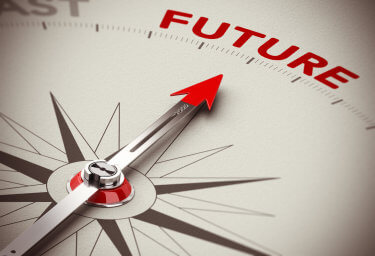
The following recommended actions are based on where I believe the profession is today and what needs to be done. We should seek worldwide consensus on these recommendations and agreement on what it’s going to take to achieve them. Then, as dedicated professional educators at all levels, we should take as rapid and strong action as we can muster working closely with our professional associations.
- Sharpen Our Professional Image
In the past, the field of physical education has tried to be “all things to all people” and sadly today does not know exactly what it stands for. We must sharpen our image and improve the quality of our professional efforts. Our focus should be primarily on developmental physical activity – specifically, human motor performance in sport, exercise, and related expressive movement. As we sharpen our image, we should make a strong effort to include those working in private agencies and commercial sectors. We must extend our efforts to promote the finest type of developmental physical activity for people of all ages in “normal, accelerated, or special” populations.
- Rename Our Professional Field
Over the years, all sorts of name changes have been implemented. We’ve tried to explain either what people think we are doing or should be doing, or to camouflage the unsavory “dumb jock” connection that the term “physical education” conjures up in some minds.
Our focus should primarily be on developmental physical activity while simultaneously moving toward an acceptable working term for our profession. In so doing, we must keep in mind the field’s bifurcated nature in that it has both theoretical and practical (or disciplinary and professional) aspects.
Today, in some places we are called “physical education and sport” and in others “physical and health education.” Not long ago, Canada’s professional association changed its name to Physical and Health Education Canada. The most recent renaming effort in the USA created SHAPE America a professional society that identifies “health and physical education” as its focus.
I believe that a more desirable and impactful disciplinary name might be “developmental physical activity” Within this framework it would be easy to delineate fields and include sport, exercise, and expressive movement.
- Identify a Tenable Body of Knowledge
Various social forces and professional concerns have placed us in a position where we do not know where or what our body of knowledge is. I strongly support the idea of disciplinary definition and encourage the continuing development of a body of knowledge based on a consensual definition.
Our discussion and debate must lead to a merging of tenable scientific theory that is consistent with our societal values and emerging technology We need to gradually, steadily, and increasingly provide our colleagues with the knowledge that they need to perform as top-flight professional educators. As such, its essential we possess the requisite knowledge, competencies, and skills necessary to provide high quality developmental physical activity services.
- Increase Support for Our Own Professional Associations
For a variety of reasons there is insufficient support for our own professional associations. Voluntary and mandatory mechanisms need developing that relate membership in professional organizations both directly and indirectly to stature within the field.
Let’s commit ourselves to work tirelessly and continually to promote the welfare of professional practitioners who are serving the public in areas that we represent. To succeed, we might need to exert pressure to encourage people outside the profession to give first priority to our own groups (as opposed to those of related disciplines and/or allied professions). The logic behind this dictum is that our own survival comes first for us!
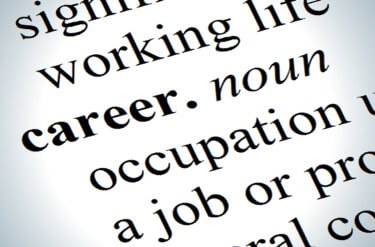
- Establish Professional Licensing
Teachers-coaches in schools, colleges, and universities are in most places protected indefinitely by the shelter of the all-embracing rules governing the teaching profession. But looking forward, through establishing professional state or provincial licensing, we should move rapidly and vigorously to get officially recognized for our developmental physical activity work in public, semi-public, and private agencies and in commercial organizations. At the federal level we should encourage individuals to apply for voluntary registration as qualified practitioners.
- Improve Harmony Within the Field
An unacceptable series of gaps and misunderstandings has developed among (a) those in our field concerned primarily with the bio-scientific aspects of human motor performance; (b) those concerned with the social-science and humanities aspects; (c) those concerned with the general education of all students; and (d) those concerned with the professional preparation of physical educators/coaches at the college or university level. We must strive for greater balance and better understanding among these essential entities within the overall field.
- Increase Harmony Between Allied Fields
Throughout the 20th century the field of physical education spawned a number of allied fields (or professions). It’s time to seek better understanding of what these allied fields claim they do professionally, and where there may be a possible overlap with what we claim that we do. Where disagreements prevail, they should be ironed out to the greatest extent possible at the national level.
- Resolve our Relationship with School & Collegiate Sports
For several reasons, an ever-larger wedge has been driven between units of physical education and interscholastic and intercollegiate sport in educational institutions where gate receipts have become a priority. Such a rift serves no good purpose and is counter to the best interests of both groups. We must work for greater understanding and harmony with those people who are primarily interested in the promotion of highly organized, often commercialized athletics. At the same time, it is imperative that we do all in our power to maintain competitive sport in a sound educational perspective within our schools, colleges, and universities.
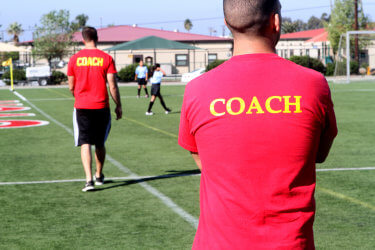
- Pursue a Relationship with Intramurals and Recreational Sports.
Intramurals and recreational sports are in a transitional state at present although both are clearly here to stay in our colleges and universities. At the high school level, intramurals haven’t really taken hold yet despite the fact that they have a great deal to offer the large majority of students in what may truly be called recreational (even educational) sport.
Both philosophically and practically, intramurals and recreational sports ought to remain within the sphere of the physical education and sport field. Departments and divisions of physical education and sport should accept the idea that intramurals and recreational sports are co-curricular in nature. Both deserve regular funding as laboratory experience in the same manner that general education course experiences in physical education receive their funding for instructional purposes.
- Guarantee Equal Opportunity
“Life, liberty, and the pursuit of happiness” should be guaranteed to all in the world. As members of a field (within education) or as a profession (in society at large), we should move positively and strongly to see to it that equal opportunity is provided to the greatest possible extent (a) to women, (b) to minority groups, and (c) to special populations as they seek to improve the quality of their lives through the finest type of experience in the many activities our field offers.
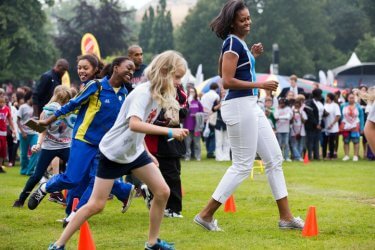
- Value our Physical (Activity) Education Identity
In addition to the development of the allied professions (e.g., school health education), during the second quarter of the twentieth century (around the 1960s) we witnessed the advent of a disciplinary thrust. This was followed by a splintering of the field’s “knowledge components” to form many different sub disciplinary societies.
This splintering and the resulting divisions has clearly weakened the overall field of physical education in both educational institutions and in the larger society. Today it is more important than ever that we hold high the physical activity education identity as we continue to promote vigorously the professional and scholarly foundations of the field.
- Apply a Competency Approach
The failures and inconsistencies of traditional educational processes have become increasingly apparent. Going forward we should explore the educational possibilities of consistently applying a competency approach in our general teaching, in professional preparation, and in public, semi-public, private, and commercial agency endeavors.
This means that initially we must indicate clearly what state or quality we are asking students to achieve in the various theoretical and practical experiences outlined in the curriculum. Then we need to see to it that they achieve sufficient knowledge and skill to meet the curricular requirements before advancing to the next stage of their development.
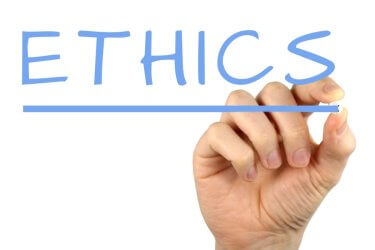
- Develop a Clear Code of Professional Ethics
As fields and professions have evolved, embryonic professional groups soon become conscious of the need for a set of guiding professional ethics – that is, a set of professional obligations that are established as norms for practitioners in good standing to follow.
Our field/profession needs a well-defined creed, as well as a detailed code of ethics as we move ahead in our development. Such a move is important because ethical confusion prevails in North American society. A sound code of ethics combined with steady improvement in the three essentials of a fine profession would place us in a much firmer position to claim that we are demonstrably members of a fine profession worthy of respect.
These three “essentials” include: (1) an extensive period of training, (2) a significant intellectual component that must be mastered before the profession is practiced, and (3) a recognition by society that the trained person can provide a basic, important service to its citizens (Zeigler, 1984, 1992, 2007).
- Reunify the Field/Profession’s Integral Elements.
There now appears to be reasonable agreement that what is now called physical (activity) education and (educational) sport is concerned primarily with developmental physical activity as manifested in human motor performance in sport, exercise, and related expressive movement.
We must work for the reunification of those elements of our field or profession that should be uniquely ours within a prescribed disciplinary definition.
- Expand Cross-Cultural Comparison and International Understanding.
Our profession has done reasonably well in the area of international relations within the Western world due to the solid efforts of many dedicated people over a considerable period. But today we need to redouble our efforts to investigate cross-cultural comparisons of physical education and educational sport while striving for international understanding and cooperation between all nations.
Much greater understanding of the concepts of ‘communication,’ ‘diversity,’ and ‘cooperation’ is required to create a better life for all in a peaceful world. Our profession can contribute significantly toward this long–range, visionary goal.
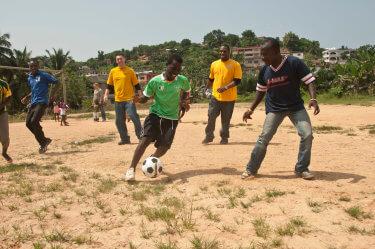
- Recognize Physical Education’s Permanency and Change
The four “principal principles” of physical education identified by the late Arthur Steinhaus of George Williams College still apply most aptly to our professional endeavors. These include the overload principle, the principle of reversibility, the principle of integration and integrity (body and mind), and the principle of service to others to improves lives. We should now emphasize that which is timeless in our work, while at the same time accepting the inevitability of societal change.
- Communicate Our Value in Improving the Quality of Life
Our field is unique within education and in society. Fine living and professional success involves so much more than important verbal and mathematical skills. We must do more to help society comprehend that one’s quality of life can be improved significantly through the achievement of a higher degree of kinetic awareness and through heightened experiences in sport, exercise, and related expressive movement.
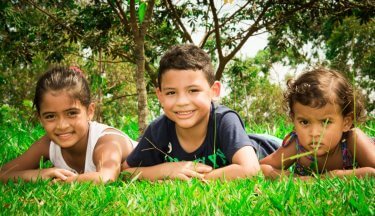
- Reassert Our “Will to Win”
The developments of the past 50 years have created an uneasiness and concern about the future of our “field” or “profession”. Doubts have been raised by some as to the field’s “will to win” through achieving the highest type of professional status. Let’s pledge ourselves to make still greater efforts to become vibrant and impactful through absolute dedication and commitment in our professional endeavors. Ours is a high calling as we seek to improve the quality of life for all through the finest type of developmental physical activity in sport, exercise, and related expressive movement.

Thank you Earle for this article, insight, scholarship and wisdom. Our profession and our lives are better because of your influence!
Thank you, Brian. In year 99 it’s a real”daily struggle”! But whp’s complaining?
Cheers, Earle
Great set of goals and visions! Although this is embedded in your essay, I would add a specific emphasis on greater collaboration and linkage between the “silos” of physical education and the “silos” of biomedical and translational research. From a child health perspective, there is a need to rethink how we assess fitness (and, more profoundly, what that means in the context of growth and development). Future discoveries using ‘omics, machine learning, wearable technologies, etc., will surely alter how we view exercise in children and adolescents. Our communities should establish stronger and stronger mechanisms to work together and share insights and goals.
Good reaction, Brian. Thank you, All life’s best! Earle
Certainly the words of Dr. Zeigler continue to resonate and inspire. Far more time needs to be spent in examining his extensive writings to discover background information on his seminal works.
I also agree strongly with the comments of Dr. Dan M. Cooper, for we have the framework to guide the combination of “silos” into an integrated approach. The Whole School, Whole Community, Whole Child (WSCC) model created jointly by ASCD and CDC provides a merging of community, school and parental resources. While Dr. Zeigler makes strong points for the physical education and sport model, many also see that the sport model focuses not on lifelong health-enhancing behaviors, but on behaviors associated with highly organized sport competition. I would like to think that he also sees sport participation as an important element in an adult lifestyle, and it may be in the way we define sport (the highly organized and regulated sport model in high school, universities and professional teams versus the sport participation for pleasure and meaning in an adult context) that is an issue to consider.
Good delineation, Tom. All life’s best, Earle
Great words but I really loved the section about The four “principal principles” of physical education. We all need that reminder. Staying focused on what’s important in the midst of so much change.
Thank you for your reaction. I almost missed seeing it.
Cheers, Earle
Hi Meggin,
A thoughtful reaction, Meggin!
Cheers, Earle
Thoughtful reaction, Megin! The struggle continues… All life’s best, Earle
Greetings Meggin, Thank you for reaction.
Question: Are there more “principal principles”?
Cheers, Earle
Very nice post.Physical Girls education is also important for self defense. This post is very inspiring to every girl. Thanks for the elaboration. I am sharing this article with https://qanda.typicalstudent.org team members for their thoughts and opinions